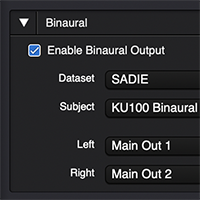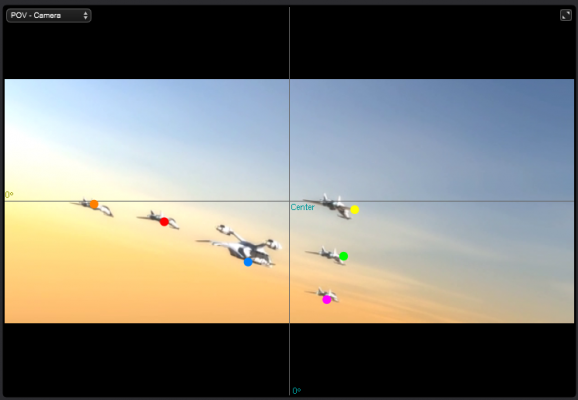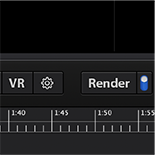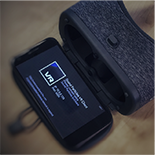
All New Engine
The 2.1 update incorporates a new audio engine, responding to real-time changes with optimized iterations, delivering your sound design in the best audio quality possible.

Batch Processing
Create your session and set Sound Particles to output hundreds of different renders in one pass. This feature makes mass production of sound effects a reality.

Track Presets
Create and save an infinite number of track and microphone settings, recall track setups with just two mouse clicks. Includes 100+ professionally crafted presets.

User Templates
Save your sessions as templates. Include any number of tracks or microphones, never start from scratch again.

Enable / Disable
Enable or disable audio files, movement or audio modifiers. Experimenting with different techniques was never as easy as it is with version 2.1.
Sound Particles is something completely different from any other professional 3D audio software that exists today.
Sound Particles uses the concept of computer graphics, but for audio: each particle represents a 3D sound source (instead of a 3D object) and a virtual microphone captures the virtual sound of the particles (instead of the virtual CGI camera).

Imagine that you want to create the sound of a battlefield with Sound Particles. You could create 10.000 particles (sound sources), spread them over a square mile, pick 50 war-related sounds from your sound library and render the entire scene with a virtual microphone (5.1, Dolby Atmos 9.1 bed, etc.).

Each particle would randomly select one of the war-related sounds for reproduction, which means that some particles would reproduce the 1st audio files, other particles would reproduce the 2nd audio files, and so on. Also, each particle (sound source) would be positioned randomly on a square with a length of 1 mile. To obtain more interesting results, movement modifiers would add motion to the particles and audio modifiers would apply random gains, delays, EQ or time/pitch variations. The virtual microphone will be responsible for capturing the virtual sound of the scene, based on its position, direction and the position of all particles. The sound of all particles is rendered, taking into consideration things like propagation attenuation, speed of sound and Doppler effect.
There’s more!

CGI Integration

Real-time Rendering

Binaural Monitoring

VR Client App







